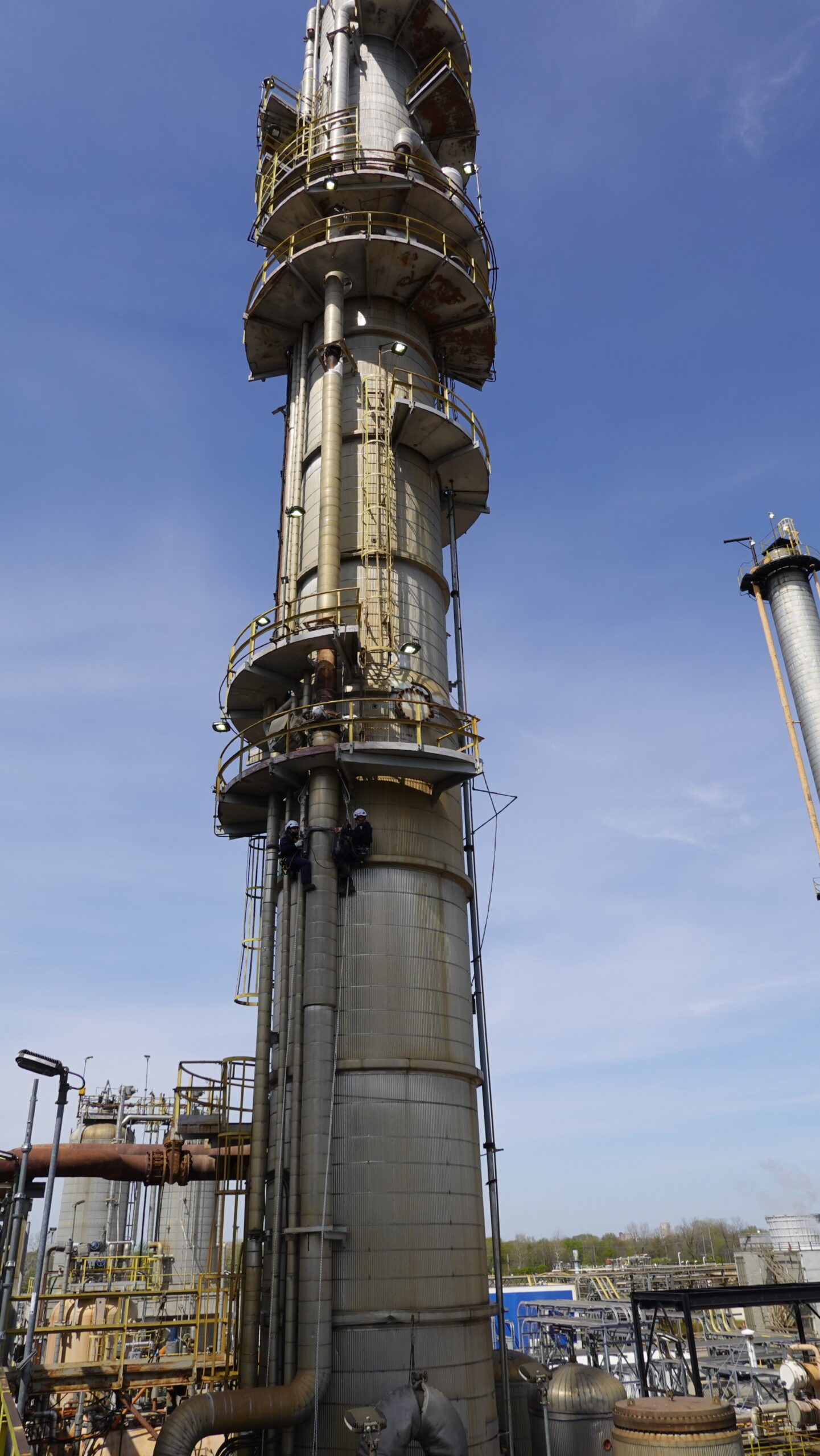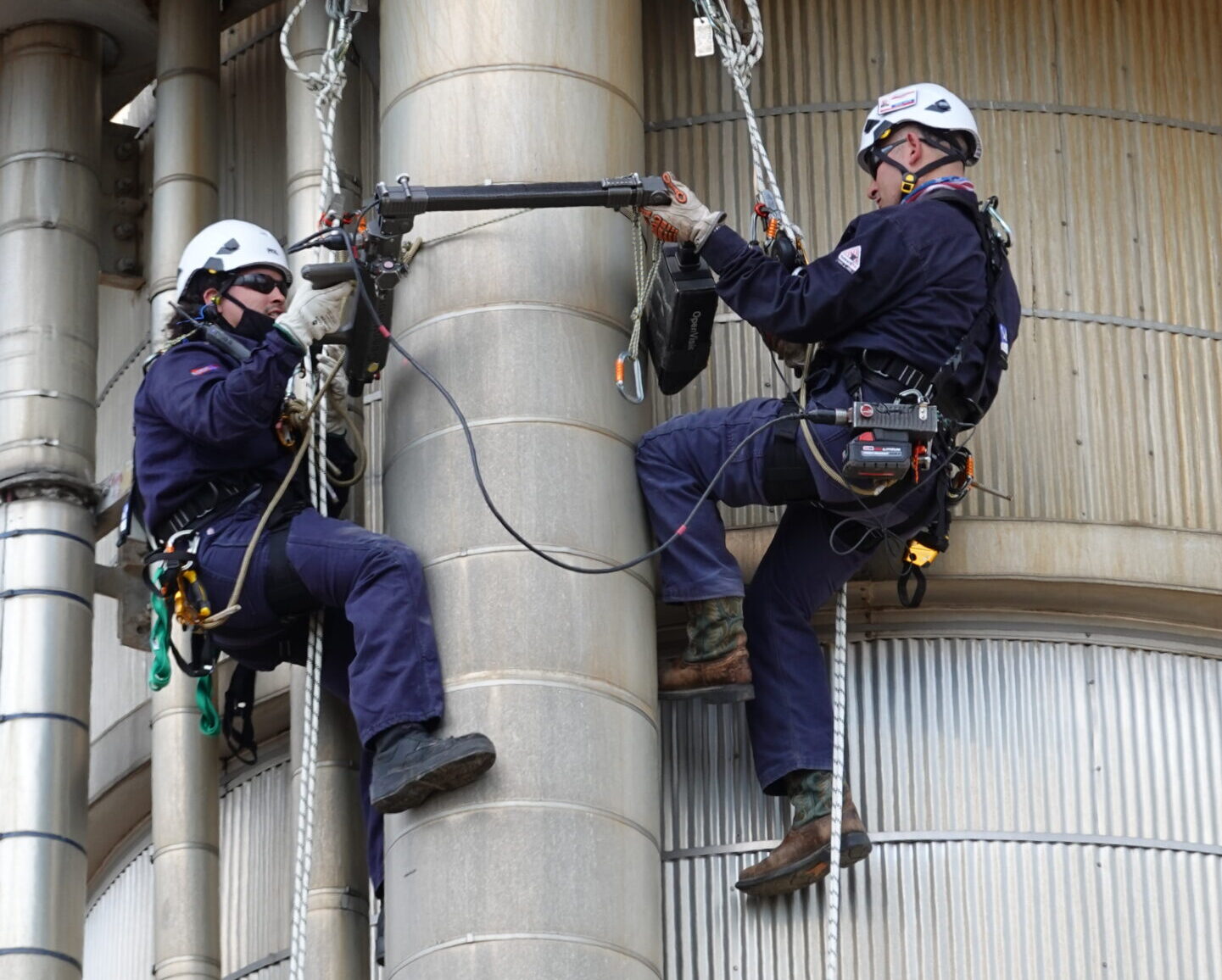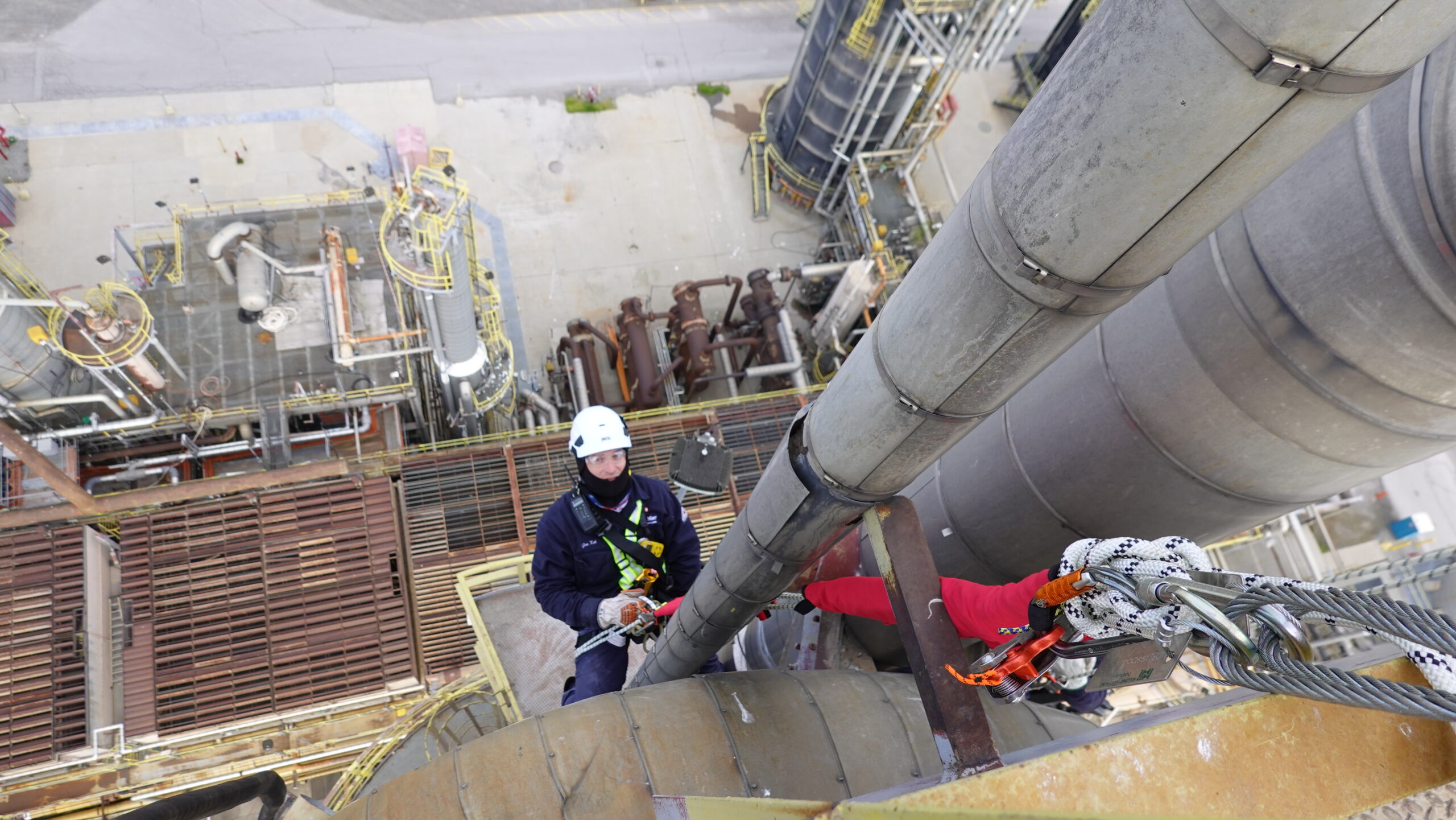OpenVision Real Time Radiography
Open vision Real Time Radiography uses an X-Ray tube in combination with a digital imager on a handheld C-Arm platform to allow technicians to scan through the thermal insulation system and look at the external surface of the piping. Any external corrosion can be seen quite easily. This method is helpful for identifying actual corrosion on the piping, and can be deployed rapidly, often making it our preferred screening tool on piping that fits within this unit’s capabilities.
The OpenVision RTR unit is limited in the size of the piping it can scan. Exact diameter limitations will depend on the combined diameter of the piping and the thickness of the insulation. Congested piping locations may also limit the available views of the piping or obstruct the use of the unit altogether. OpenVision plays well with Digital Radiography on piping to verify wall thickness of findings prior to insulation removal.
Moisture Detection Imaging
Moisture Detection Imaging uses X-Ray Backscatter to identify moisture beneath insulation jacketing, which can be used as an effective screening tool for larger diameter piping and congested piping obstructing the use of the OpenVision system. The use of the X-Ray Backscatter system is convenient to use with a very rapid deployment.
It is limited in that it will only identify moisture within the thermal insulation system, therefore areas identified with this method may not have active corrosion networks if the protective coatings are still intact. This method pairs very well with Guided Wave Ultrasonics once areas of interest have been identified.
Guided Wave Ultrasonics
Guided Wave Ultrasonics (GUL) uses a collar fitted around the piping to send torsional and longitudinal waves through the piping without the need to remove large sections of insulation before corrosion in an area of concern has been identified.
Guided Wave is an effective volumetric screening tool capable of identifying wall loss within a piping system. It works very well when used to assess areas of concern identified by moisture detection imaging and is especially effective when combined with a rope access program capable of removing thermal insulation systems for the placement of the collar and to confirm findings with additional UT Inspections. Guided Wave is especially useful for larger diameter piping that is beyond the capabilities of Digital Radiography performed with an IR192 source.
The effective distance of each GUL scan will vary based on the surface condition of the piping, protective coatings, piping geometry, the presence of welded attachments, and flange connections. Our project managers work closely with our GUL subject matter experts and rope access division to develop a plan for inspection with GUL prior to mobilization of the GUL technician.
Moisture Detection Imaging
The advantages of moisture detection imaging as a screening tool on Pressure Vessels and Tanks become more pronounced since OpenVision, guided wave, and Digital Radiography cannot be deployed for this application. The rapidity of the inspection method can be effective in narrowing areas of interest on vessels and tanks, where Pulsed Eddy Current can then be used for follow-up inspections, and drastically reduce the amount of insulation removed for a comprehensive inspection.
Pulsed Eddy Current
Pulsed Eddy Current is an electromagnetic inspection technique capable of providing volumetric measurements converted into an averaged thickness measurement based on the footprint of the probe.
PEC can be used to inspect vessels through up to 4-inch-thick thermal insulation systems, as well as inspect through fireproofing and concrete for skirt areas and support legs.
The PEC system can be encoded with the data displayed as a C-scan. This inspection method is limited to ferromagnetic materials. Further, because the volumetric data is an average of the thickness within the footprint of the probe, technician sensitivity to changes in thickness must be ensured to not miss localized corrosion.
This inspection method is quite effective in further narrowing areas of concern on vessels and tanks, allowing areas of insulation removal to be extremely focused and well targeted.
Having Rope Access fully integrated into our CUI program structure eliminates the need for scaffold, which saves money for our clients, but also reduces the impact of the project within the effected process units and eliminates the delays that often occur when multiple crafts and contractors are involved in multi-discipline and craft projects.
Engineering Support
TechCorr can provide the engineering support required for all abrasive tasks prior to task commencement. These abrasive task certificates can be issued for locations of insulation removal, base metal surface preparation, specific lift plans to access piping at saddle supported locations, and any necessary composite or welded repairs.
Thermal Insulation System Removal and Repair
Our Rope Access crews are assembled with NCCER certified insulators so that the guided wave and traditional UT crews don’t have any barriers to their work. These same insulators also remove insulation to progress additional inspection stages once areas of concern on piping, vessels and tanks have been sufficiently focused. Any insulation removed will be re-applied according to client specific engineering practices. Damaged thermal insulation systems can also be repaired according to client preference, even if external corrosion has not yet occurred.
Base-metal Surface Preparation and Coatings Application
Our rope access crews are also capable of preparing bare metal surface conditions for more in-depth UT inspection and applying new coatings systems or any other corrosion barriers of choice according to client specific engineering practices.
Line Lifts to Access Saddle Supported Piping
For Corrosion Under Pipe Supports identified with Guided Wave, EMAT and PASRUT, piping can be lifted at saddle supported locations for insulation removal, corrosion mitigation, additional inspection, repairs, and re-insulation. Our team has performed line lifts of piping up to 60 inches in diameter.
Composite and Welded Repairs
Should the results of the inspection warrant, we can also perform both composite and welded repairs. Each repair is handled individually with engineering review and signature for client approval prior to task commencement.




